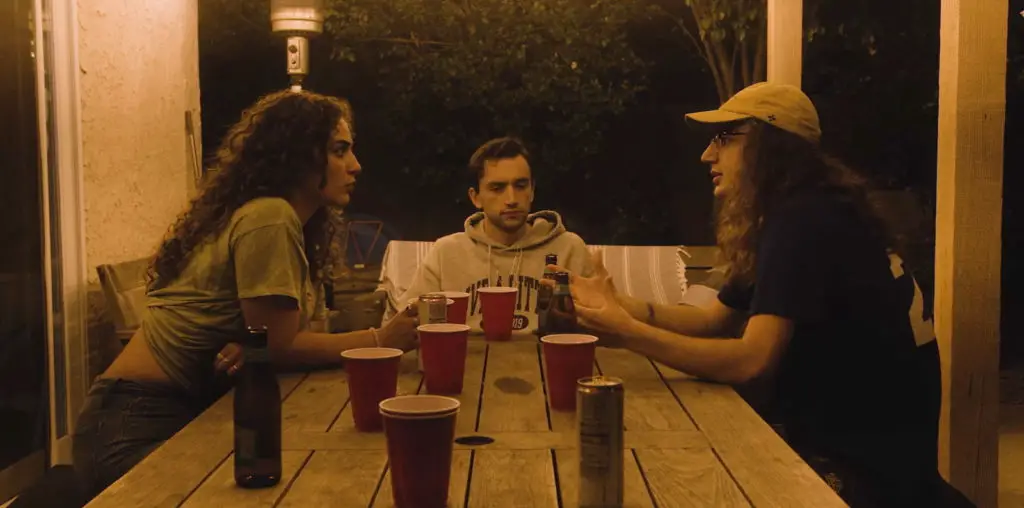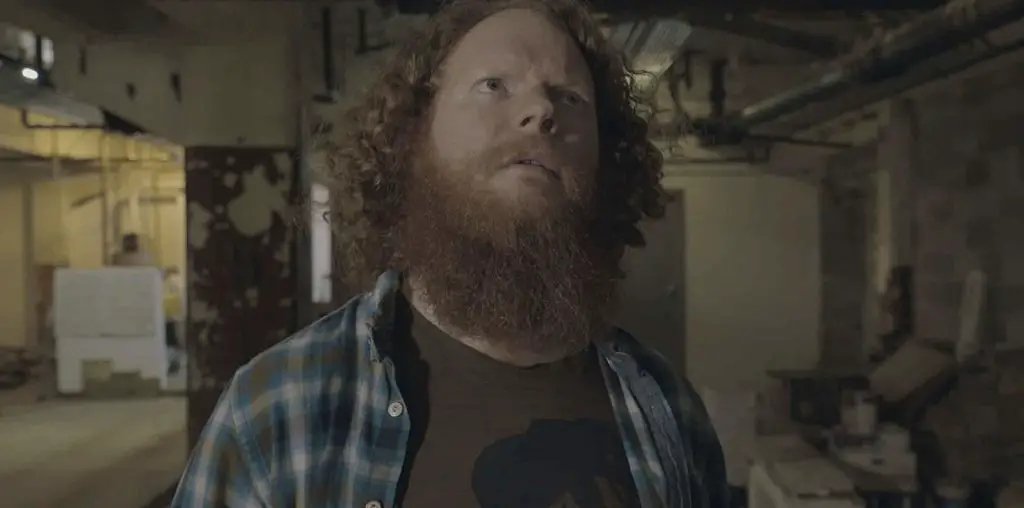
I knew I wasn’t 14 anymore once I turned 15, but just recently, I knew my teen years were gone. There was a time when I could think back to a certain age and wonder why I liked a certain TV show or genre of music. For example, I still like “Beavis & Butt-Head” today for the same reason I was a fan of the duo back then: They made no big deal about who they were. On the flipside, one of my very favorite movies at 14 was “Tommy Boy”. The new two-disc “Holy Schnike Edition” has helped in realizing that I really don’t like this movie anymore. When the preview for it appeared on the new edition of 1974’s “The Longest Yard”, I was giddy, wanting to know exactly when it has come out. It was just my old 14 year old self trying to surface again. A tire iron took care of that since it’s been years now and it’s difficult to remember why I was so enamored with “Tommy Boy”.
From what can be pieced together as reasons for liking this back then, it was most likely the appeal of Thomas Callahan III (Chris Farley) jubilant over getting a D+ on his final history exam and able to graduate from college. This mass of energy just played everything as it came along. But then again, so did Wayne Campbell and to much better effect. After getting home, he is greeted by his Dad, Big Tom, (Brian Dennehy) with a new office at the Callahan auto parts plant, with Richard (David Spade), Big Tom’s right-hand man by his side, poking at him sarcastically the entire way through. Maybe it was the back-and-forth banter between these two that did it. It damn well wasn’t Bo Derek as Beverly, set to marry Big Tom, or Rob Lowe as Paul, whom she introduces as her son. Want a little fright with your comedy? Derek and Lowe actually kiss at one point in the movie. Later, Big Tom dies of a heart attack, and Tommy decides to pitch in the house and his stock in order to keep Big Tom’s dream going, that of a brake pad division at Callahan which would revolutionize the industry. Then he sets off on a road movie with Richard, as they butt heads, as Farley fields his fair share of fat jokes, smacks right into glass, and jumps around to get laughs. Richard isn’t happy at Tommy’s inability to make a sale, realizing that the company goes straight down into the septic tank, never to be seen again if they don’t essentially raise the money needed to keep everything afloat.
It’s the old Abbott & Costello conflict. Or Laurel and Hardy. Or any other comedy team featuring an actor of disproportionate size along with a skinny one. Or even consider it “funnyman/straight man” or in Spade’s case, straight sardonic man. Either way, director Peter Segal just lets the two do not only what he feels needs to be accomplished in this story (he’s also a fan of emotional content in a movie that juts far out from everything else, making it look too awkward), but also letting them go off on their own. I must have liked it for those reasons back then, but now it’s gone. The ultimate proof of growing up bit by bit. Plus, there’s no joy in this comedy. Any kind of comedy should at least have fun with its characters. Due to who David Spade and Chris Farley were at the time, it’s as if all the motions they go through were expected, carried over from their SNL days. Sure there’s Brian Dennehy and a welcome Dan Aykroyd as Zalinsky, but what other joy is here? There’s nothing to grasp, nothing that gives off that good feeling of enjoying a comedy. As it seems now, looking back to all those years ago, this is the type of comedic film you watch when you’re a teen, before you realize there are better actors, better situations, and better laughs out there in the movies. It’s the perfect kind of “free time” movie, blowing off an hour and a half for lack of anything to do. But now, it’s nothing. Just the empty air of years gone away.
Through this new set, released to “improve” upon the previous DVD which didn’t have much, it feels like years are slowly inching along. There’s 19 TV spots, storyboard comparisons, five deleted scenes, 15 extended scenes, and six alternate takes as if the camera actually had to be in another spot to capture the comedy in a different way. Plus, featurettes at the beginning of the second disc don’t do a whole lot. In the past, good sets like these have managed to give viewers stories about the production that they obviously never knew. That’s what any DVD should do when available, either through interviews or an audio commentary. The first set of interviews coupled with on-set footage, entitled “Tommy Boy: Behind the Laughter” gets right on that, as we learn how Tommy Boy came together, the trouble of the schedule, and David Spade and Chris Farley having to shuttle between Toronto and SNL in New York each week. This is all in the first 10 minutes or so and then editor Brandon Lott of LightSource & Imagery (the production company responsible for these extra features) forgets how often people have had to slog through actors fawning over each other, directors complimenting everybody, writing the production off as a happy one, as if we needed to know. The only time I want to know how everyone got along is if a production was set right in the middle of South Central. That’s the only time those kind of compliments would ever be compelling. If everyone got along on the set, as they did on “Tommy Boy” or didn’t, a movie was still made and it still exists today. What does it matter who liked who off-screen if all that is crucial now is the movie at hand?
The aforementioned 19 TV spots are like sitting through an infomercial for hair-care products which suddenly morphs into a surreal program on turning liposuction into the perfect diet shake. One after the other, after the other, each as sad as the next. Excess and waste know no limits. Did SNL fans back then really need to be told so many times that “Tommy Boy” was coming soon? Director Peter Segal’s audio commentary on the first disc can easily be accessed on the second disc as the “Behind the Laughter” documentary because that’s shorter and Segal basically goes through everything in there at length, really not saying much. He’s a well-trained mainstream director too, as if they have a school for this, as he commends everyone involved over and over again, with every available opportunity. The sole value of this set, and then only if you were to rent it, is “Growing Up Farley” in which brothers Kevin and John Farley remember their brother as a kid and go through countless memories that are far better and much more comedic than anything conjured up either through the on-set footage, gag reel, or even the movie for that matter.
So not only is “Tommy Boy” a failed comedy, but the new DVD set is too. How much could honestly be told about the production that would merit an absorbing DVD? Not much. I’m not going to miss these years.

